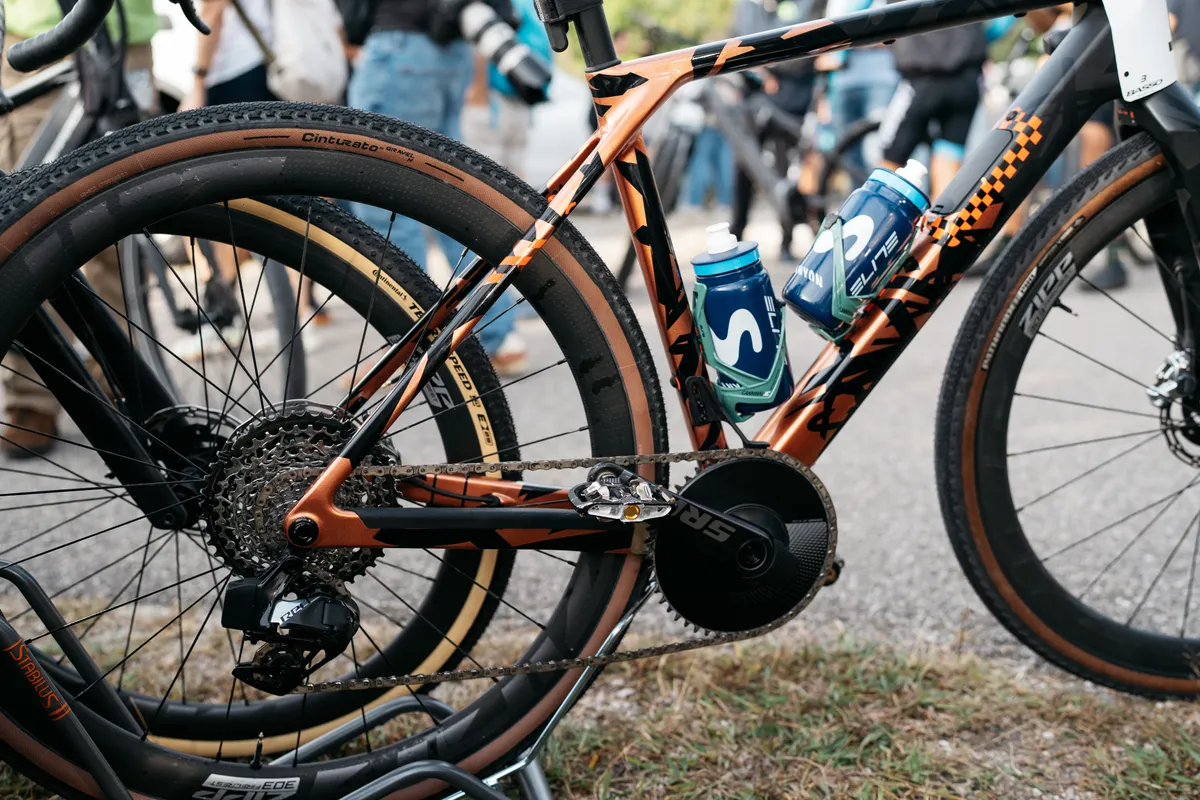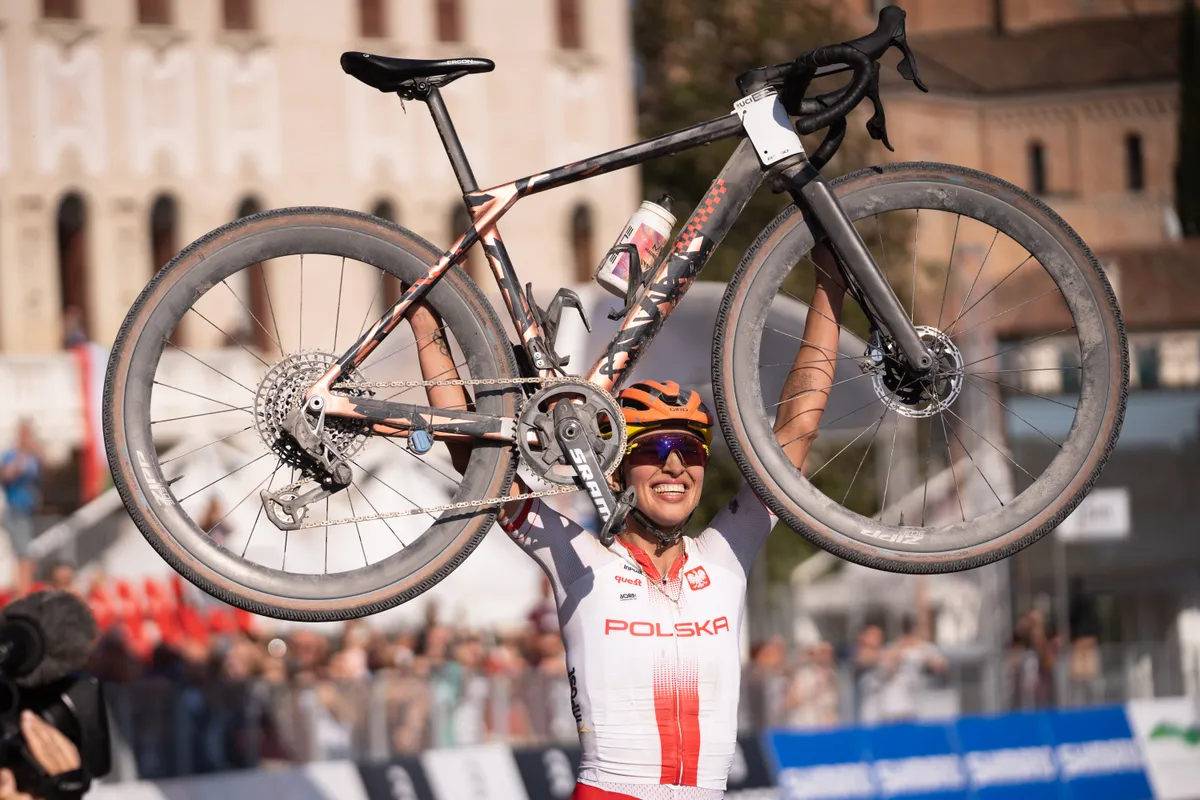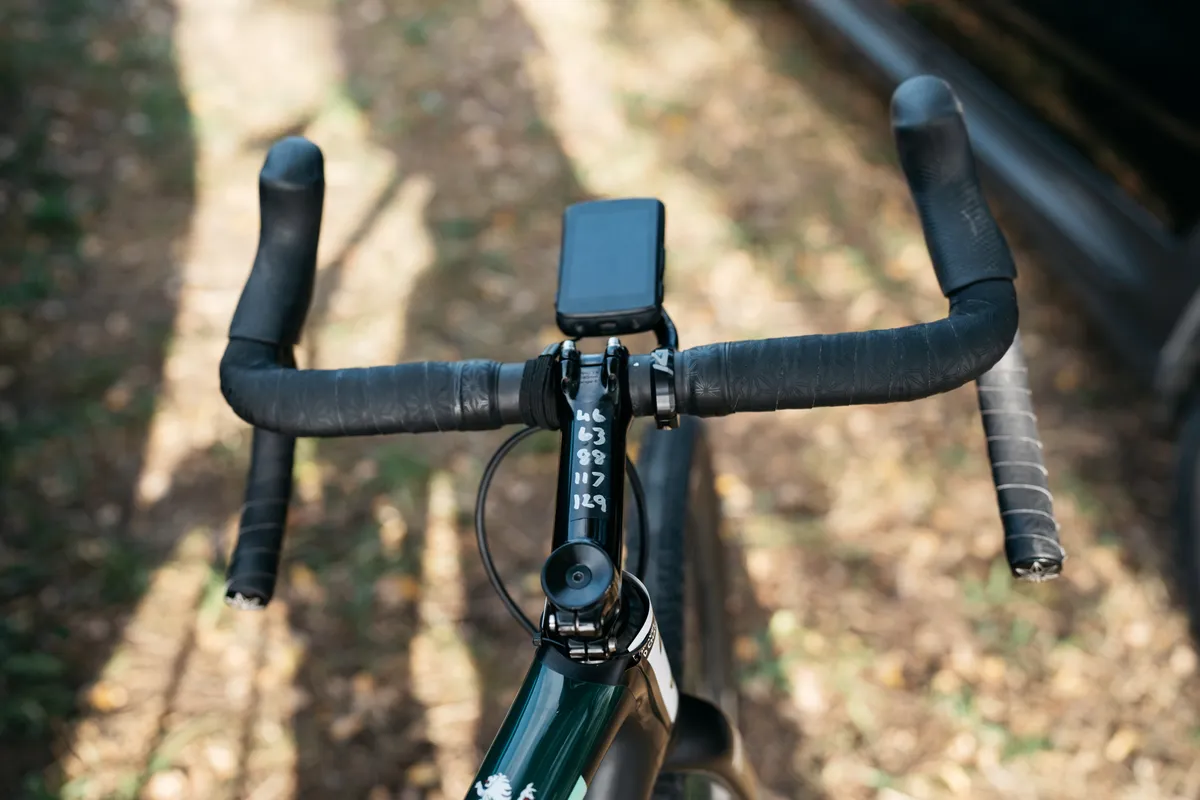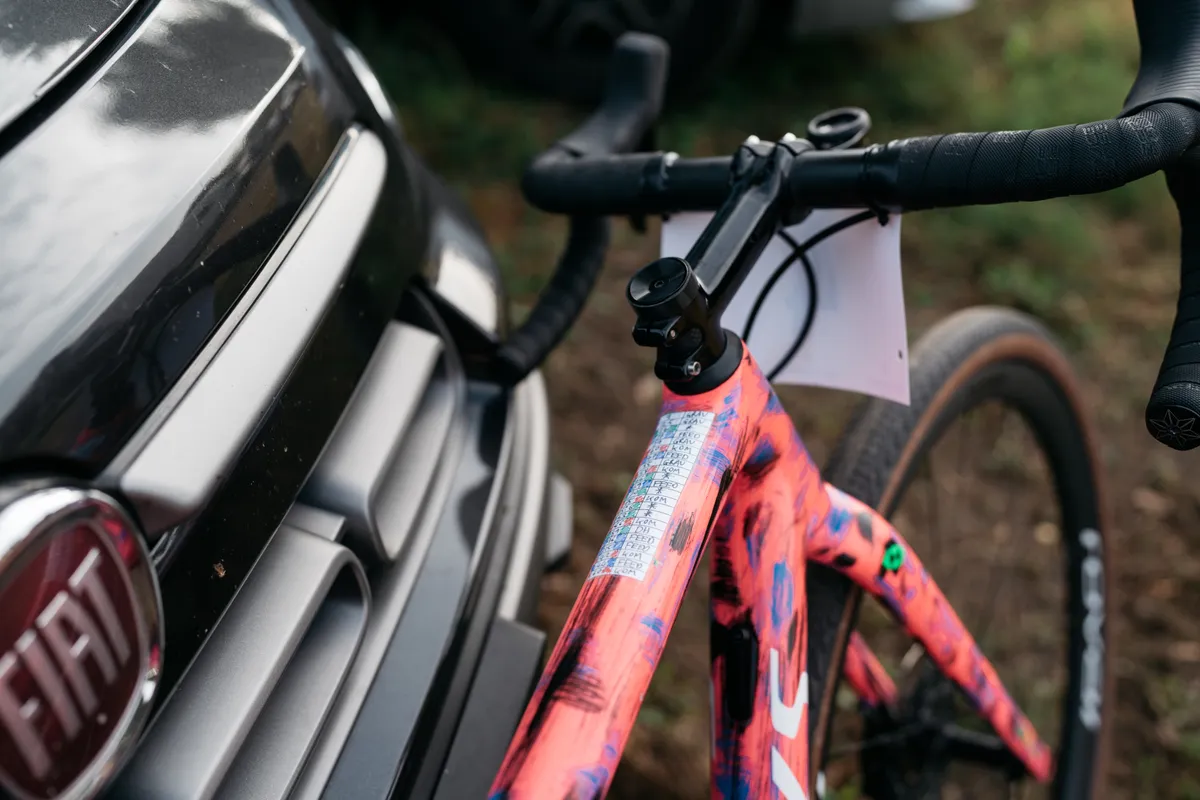The dry, dusty and relatively smooth course of last year’s UCI Gravel World Championships threw up some major tech upsets, with both Canyon riders on the podium running the Ultimate road bike, road gearing and road pedals.
For 2023, the UCI listened to the beleaguered gravel specialists and made some last-minute route changes, making this year’s course rougher and tougher.
Riders were split between excitement and apprehension over the change, with the tech looking – generally speaking – much more gravel-like this year.
In this roundup, we’ve got new and unreleased bikes, car park aero hacks, gearing that will make your knees ache and what we have to assume is the fastest tyre setup available.
New bikes from Canyon and Merida
Both riders on the top step of the podium were on new, unreleased bikes this year.
Women’s winner Kasia Niewiadoma (Canyon–SRAM) rode the yet-to-be-released Canyon Grail. This was first spotted at Unbound and has made regular appearances at headline gravel events since.
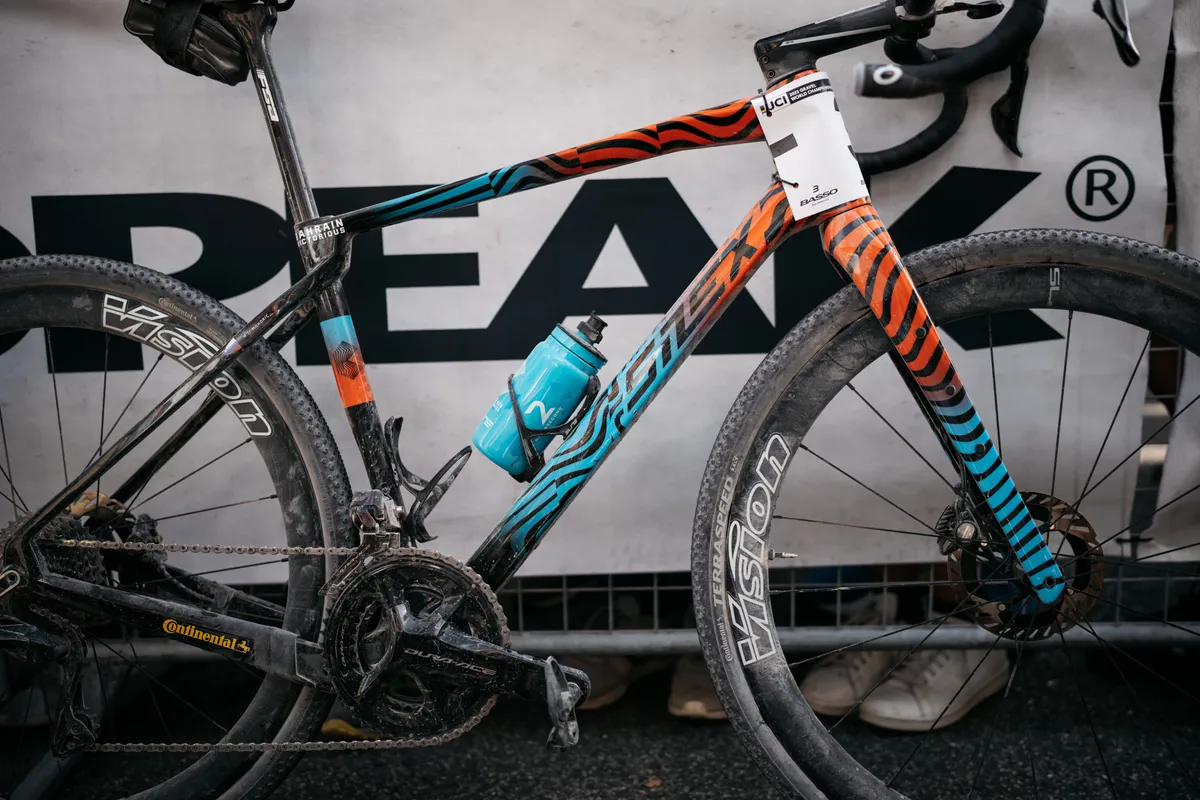
Men’s winner Matej Mohorič rode a new Merida Silex – a bike we hadn’t seen until this race.
The new Silex has a redesigned fork, more tyre clearance and a completely redesigned frame shape.

Third-placed Connor Swift also found himself on a brand new bike, the Pinarello Dogma X endurance road bike. Unlike the 2022 UCI Gravel World Championships, which was dominated by road bikes, this is the only road bike we saw.
40mm semi-slick tyres dominate
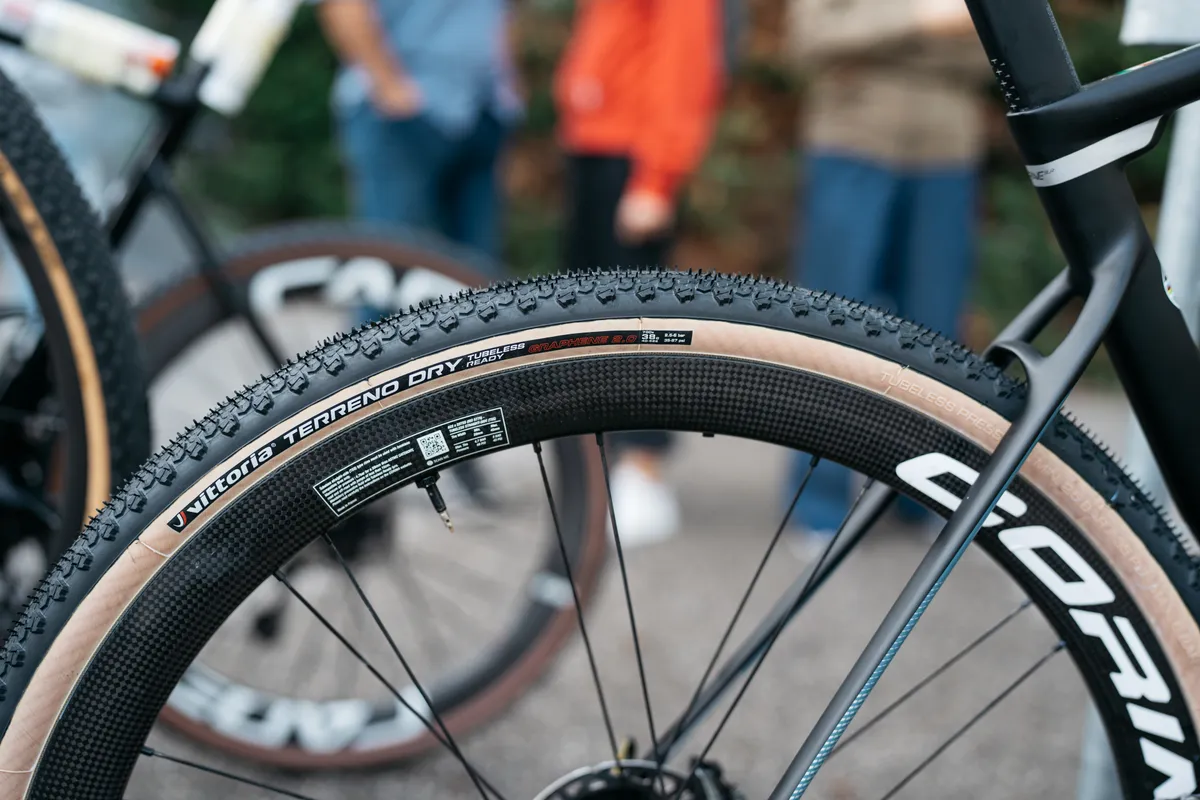
The dry, rocky course funnelled riders into a fairly narrow selection of gravel tyre choices.
40mm-wide file tread tyres, sometimes with a slick centre, were the order of the day.
The Specialized Pathfinder and different variants of Schwalbe’s G-One platform were, by far, the most popular.
The Pathfinder has gained such popularity that it’s often used as an off-sponsor choice by many riders.
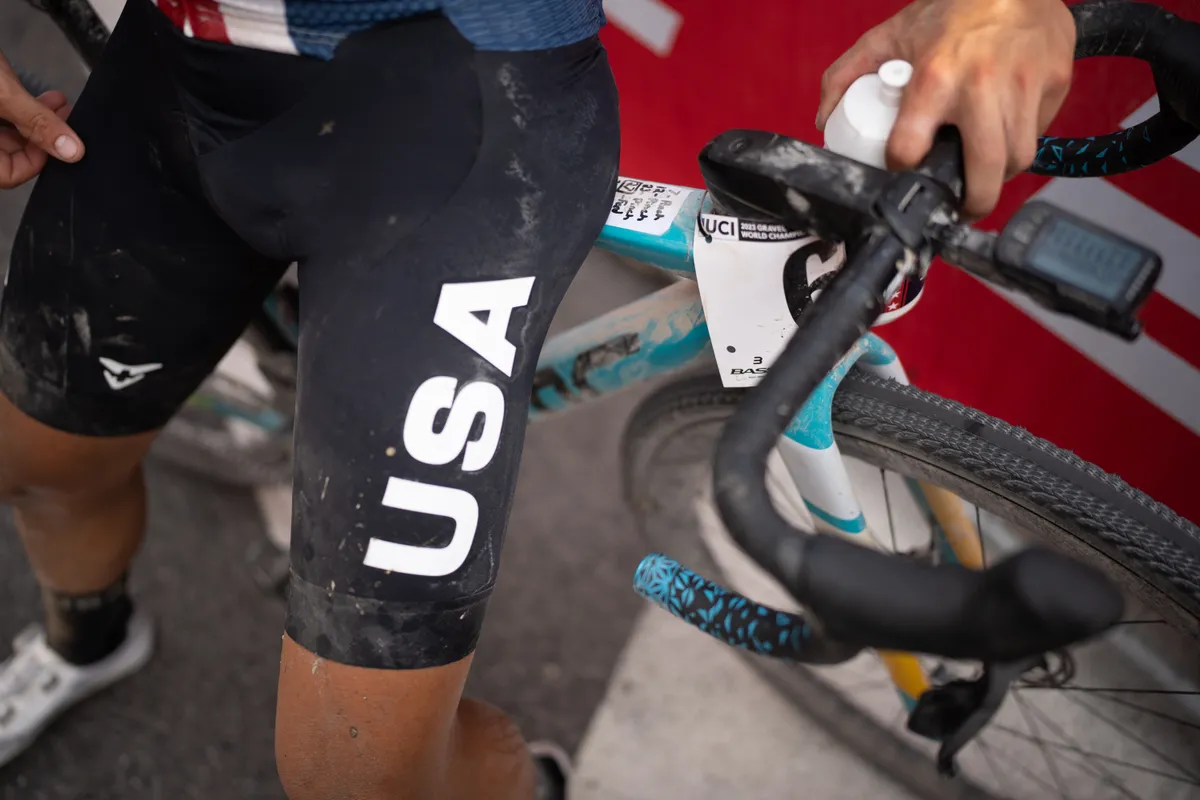
Men’s under-23 winner and BMC-sponsored athlete, Andy Lydic was running them, along with… half of Alejandro Valverde?
Valverde’s bike was running a Specialized Pathfinder up front and a Pirelli Cinturato out back – almost certainly what the bike shop local to Valverde carries, rather than a conscious (or sponsor-correct) choice.
On the road, WorldTour riders’ bikes are maintained, wheeled out shiny and fresh for race days, with separate training bikes staying at home.
The gravel scene isn’t yet receiving that kind of attention or support from the WorldTour teams, meaning maintenance is often left up to riders with little time to make changes before the start line.

Valverde's teammate, Ivan Garcia Cortina, was on the sponsor-correct Continental Terra Speeds, in the tougher, ebike-approved ProTection variant.
Choose your tape wisely
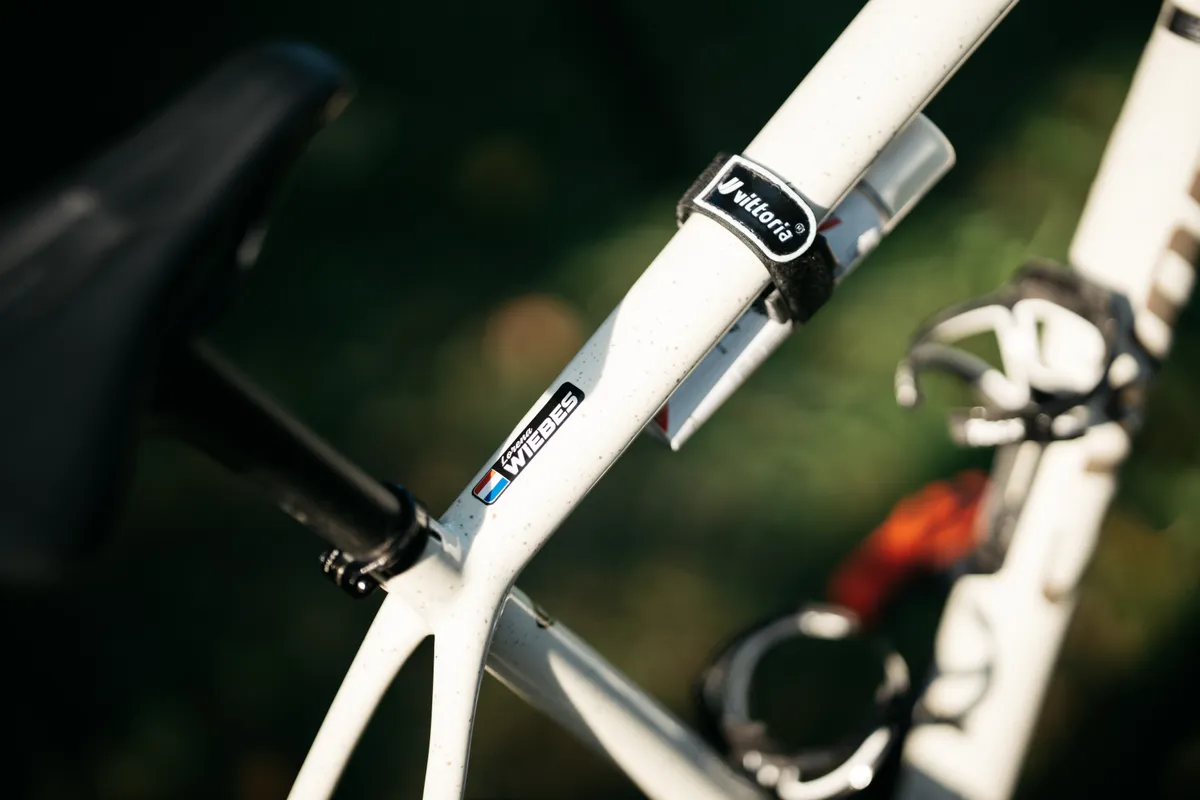
Punctures are an unavoidable part of gravel racing.
Forcing skinny tyres across mountain bike terrain at road bike speeds means punctures are ever-present – perhaps more so than in any other discipline.
This, combined with the lack of team cars on course meant riders had to get inventive, with all manner of puncture repair hacks on show at the weekend.
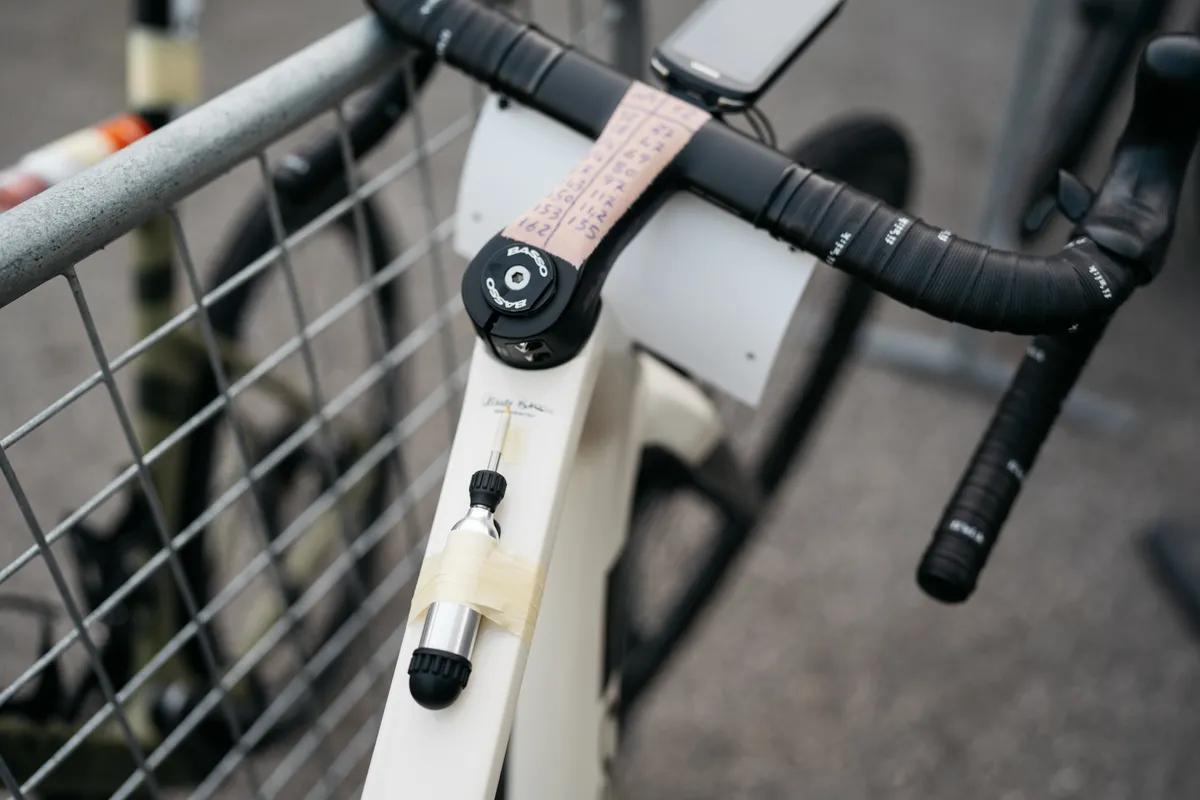
Most popular was the taped CO2 canister, or all-in-one foam and air solutions, stuck on with whatever tape happened to be on hand, or occasionally a Velcro strap. For those intent on plugging their tyres, Dynaplug was the brand of choice, adorning the top tubes of both Mattia De Marchi’s bike and Ivan Garcia Cortina’s.
Similar 'whatever-is-at-hand taping' applied to stem notes, with the exception of Cameron Mason’s very neat, colour-coded stem notes – so detailed they’d only fit on the top tube.
Other bikes featured clear tape, masking tape or medical tape. For an extra sleek look, Freddy Ovett’s electrical tape and chalk pen is hard to beat.
Respect the car park wind tunnel
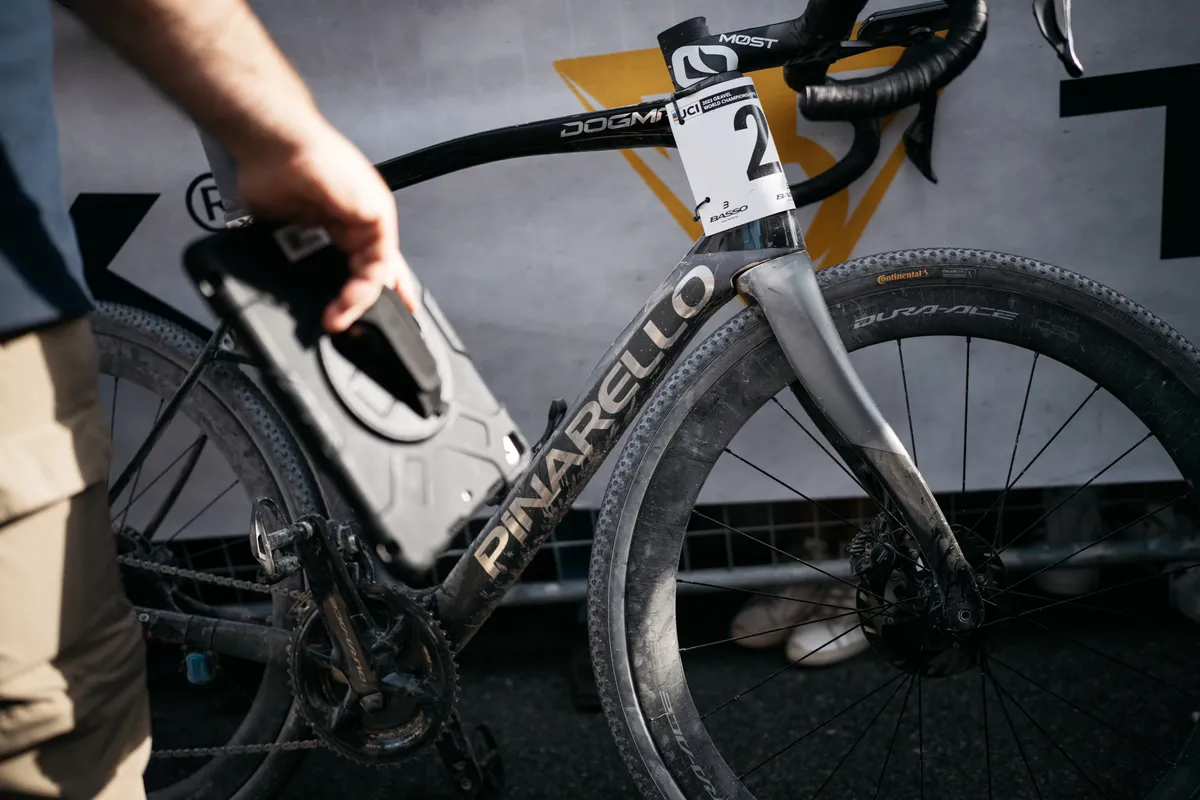
Many riders attempted to make their number boards ever so slightly more aero – a scene you wouldn’t find anywhere outside of a gravel race.
In the women’s race, Canyon riders wrapped their numbers around the headtube, whereas SD Worx went for the more traditional approach of attaching to the bar.
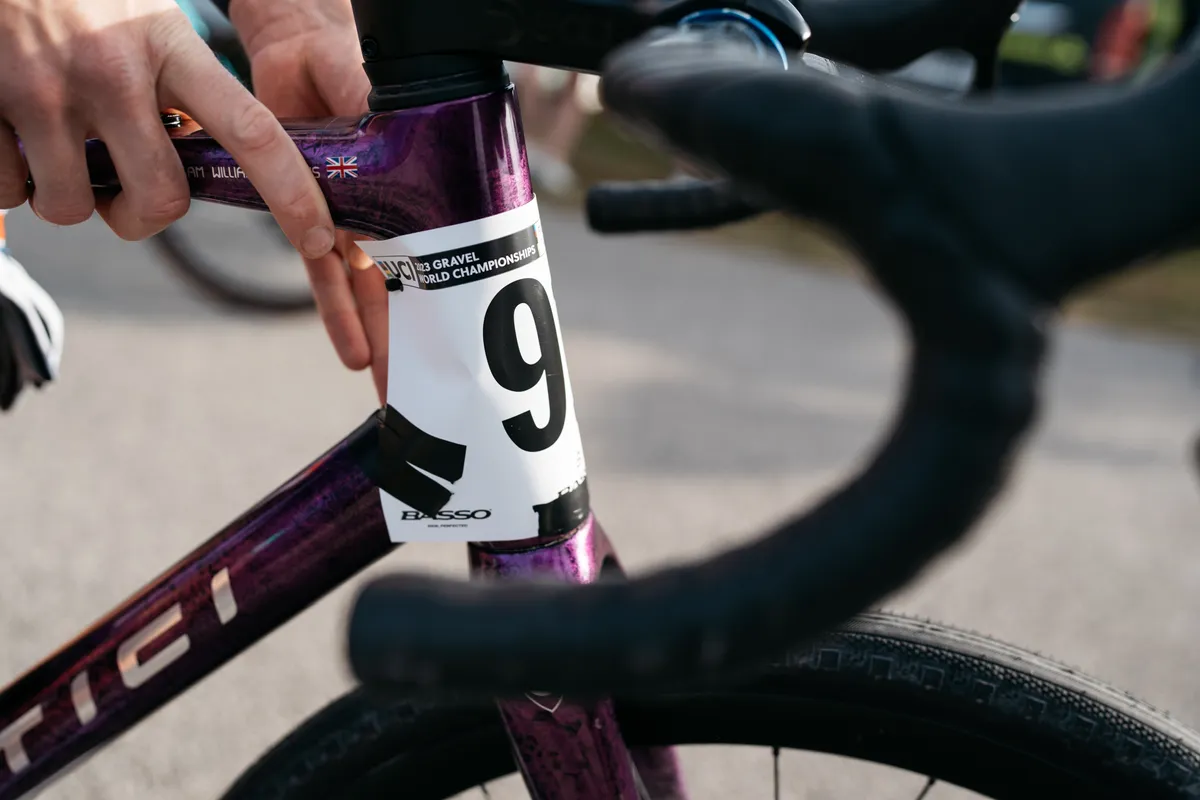
Given that Niewiadoma finished with enough time to walk across the line and lift her bike above her head, we can only assume the number placement wasn’t a deciding factor in the race result.
For the men’s race, the trimming and preening stepped up a notch, with electrical tape filling in the gaps left by zip ties alone.
Rane Roatta is back
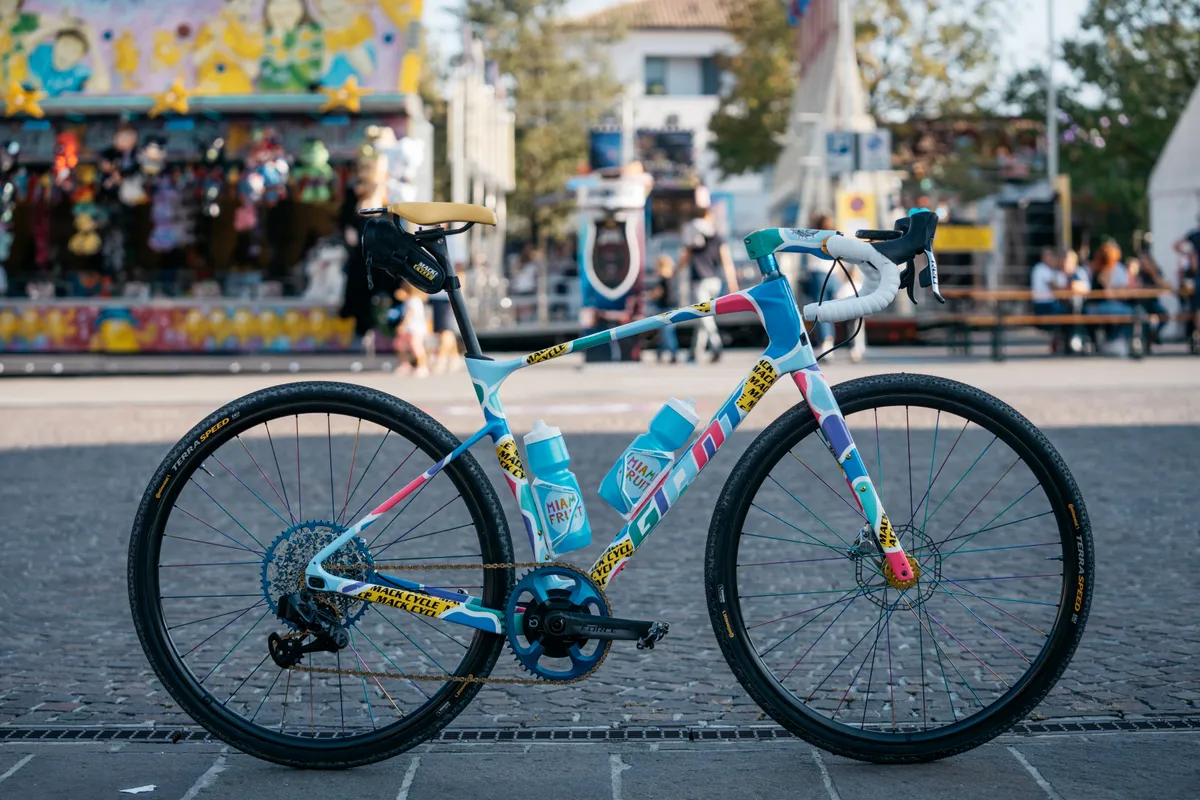
Rane Roatta raced onboard this custom-painted Giant Revolt.
As with his previous wild bike, this sports his signature super narrow bars.
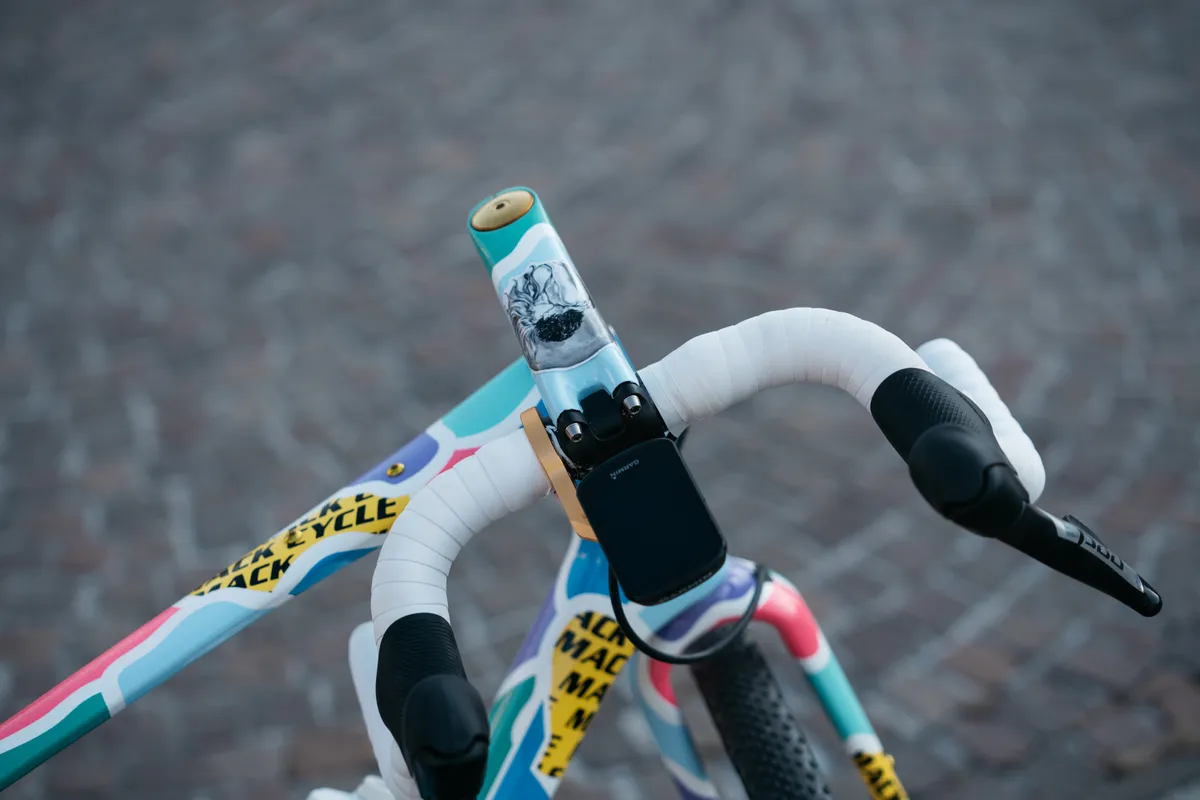
In this case, he’s specced Worx track bars, which are 23cm wide at the tops and 33cm in the drops.
This is paired with a 130mm stem. Roatta says he would have preferred a 200mm-long stem but ran out of time to source a new one.
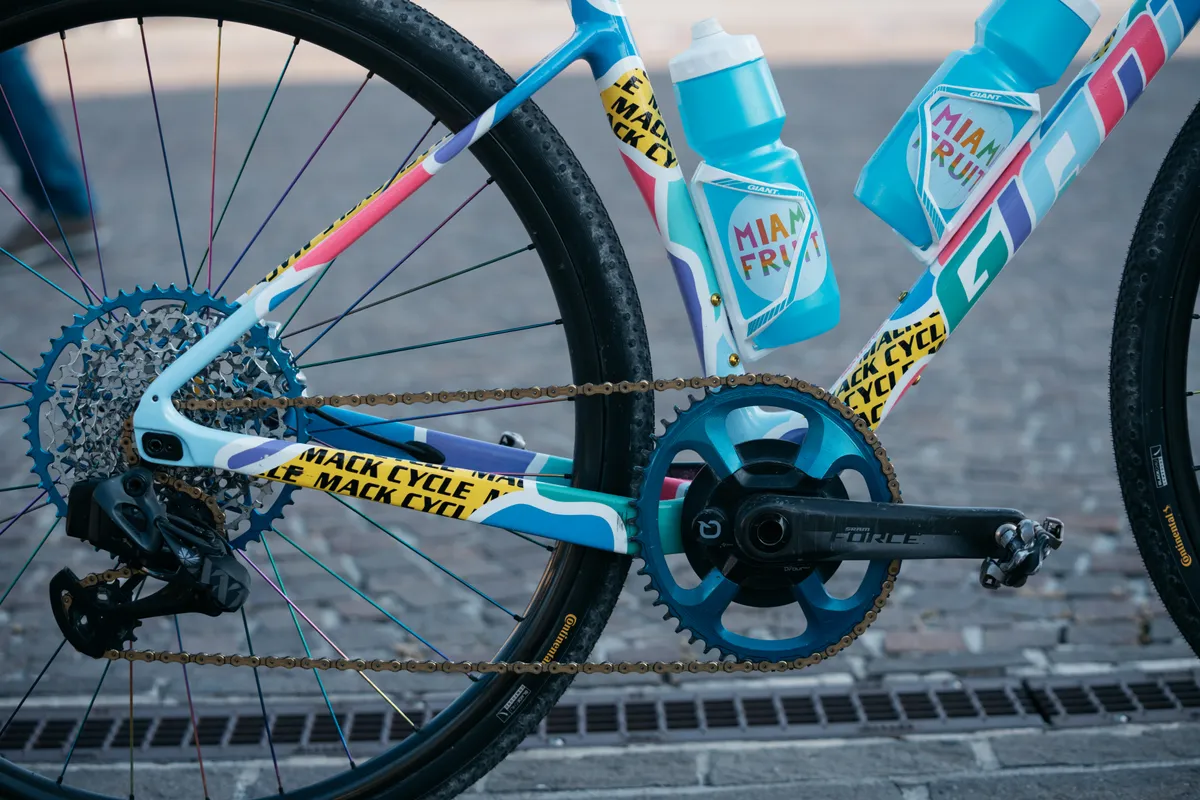
Tune hubs are laced to shallow Protens rims with custom-anodised rainbow-finish titanium spokes.
His mullet drivetrain comprises a 50-tooth oval chainring paired with a 10-52t cassette.
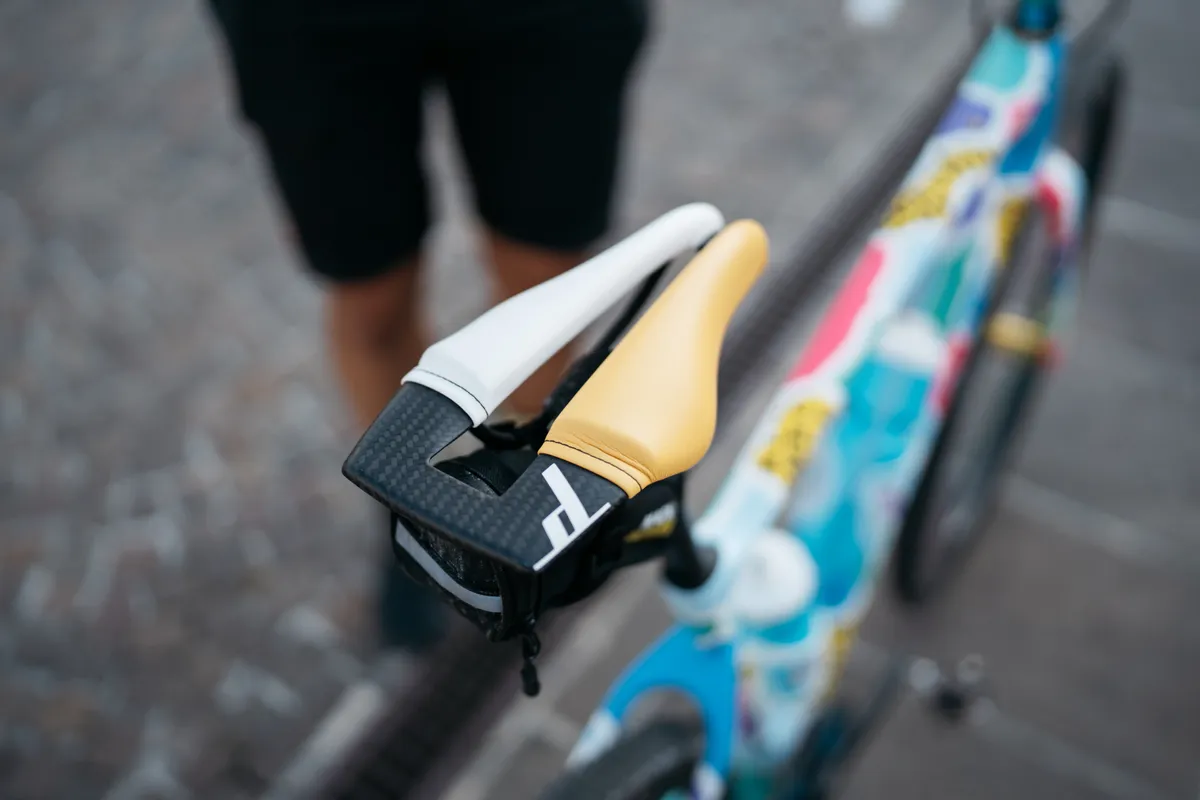
Finally, his preferred perch is an unusual 100g saddle handmade by Dash in Colorado. This has two narrow and long wings joined with a carbon beam at the rear.
No consensus on gravel bike groupsets

Gearing fell into mainly three categories: 2x road groupsets, 1x gravel groupsets, and 1x mullet setups.
Traditionally, the mullet setup has been reserved for riders looking for better climbing gears to tackle ultra-endurance races such as the Tour Divide, or the Silk Road Mountain Race. They’ve rarely been seen in top-tier gravel races.
Riders were seen pairing big chainrings with mountain bike cassettes, providing a 1x setup with adequate climbing gears and huge top speeds for a small sacrifice in choice of cadence.
The top spots of the podium were spread across these categories too, with Niewiadoma running a 1x ring with a 10-52 mountain bike rear cassette and mech (as did teammate Tiffany Cromwell).

Men’s silver medalist Florian Vermeersch rode a 1x Shimano GRX setup, but Mohorič and Connor Swift both ran road groupsets with compact and semi-compact cranksets respectively.
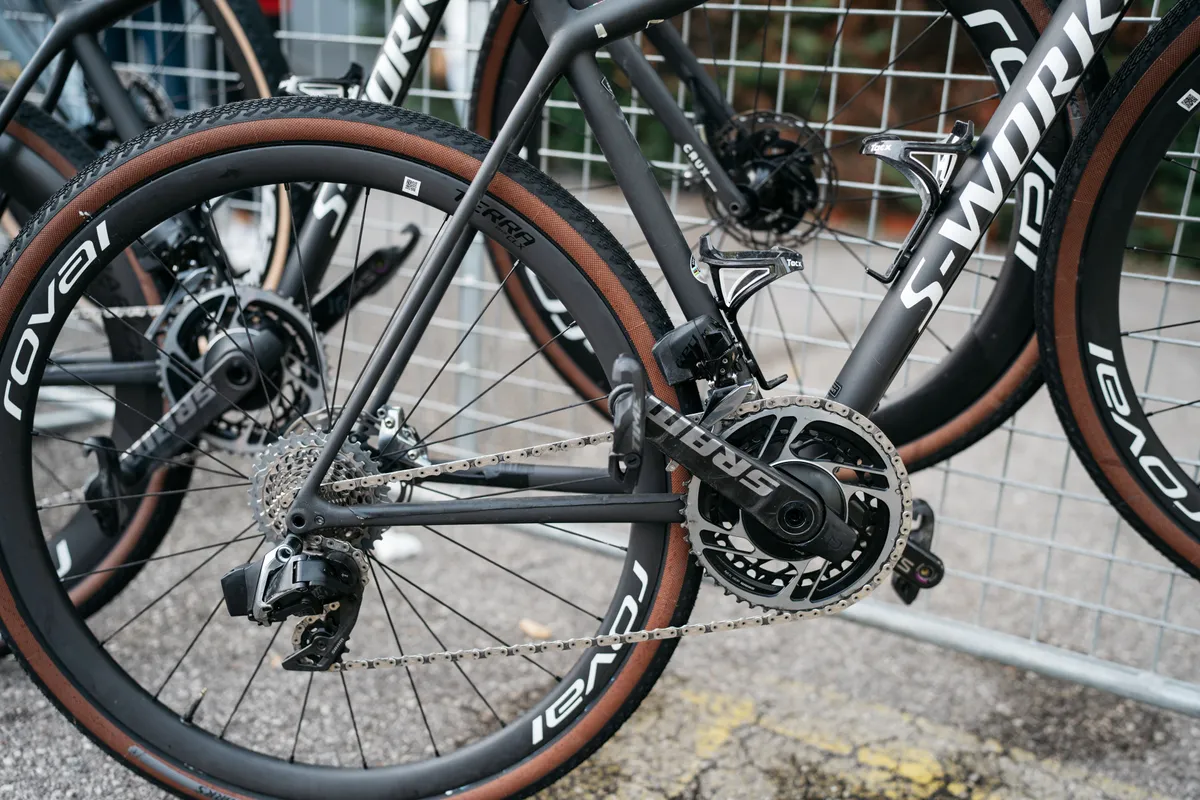
There was also a smattering of oval rings.
Ribble Collective’s Metheven Bond prefers them for smooth power delivery.
Rane Roatta prefers them as he reckons they help his Quark power meter read slightly higher numbers – the ultimate in-race morale boost.
Road pedals dominate
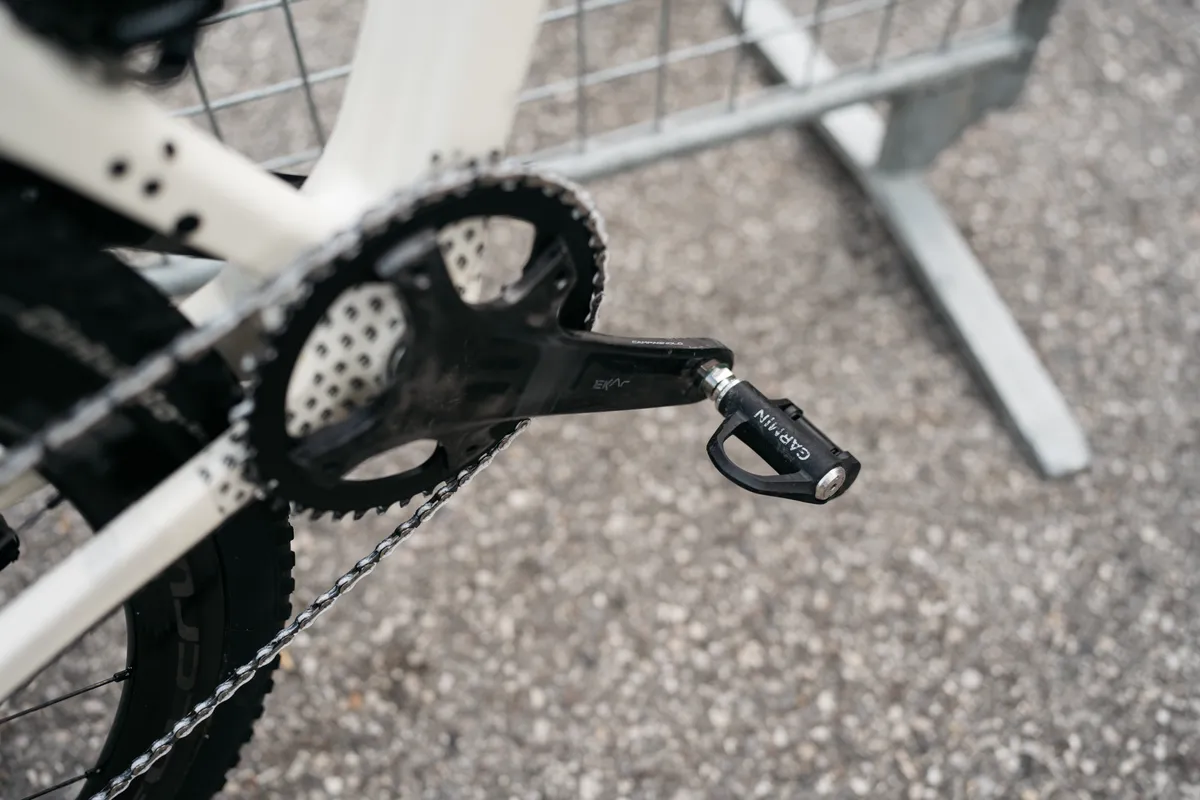
While the jury appears to be out on gear combinations and round versus oval rings, most racers have settled on 3-bolt cleat road pedals as the go-to system for gravel racing (at least for the dry, dusty course in Veneto).
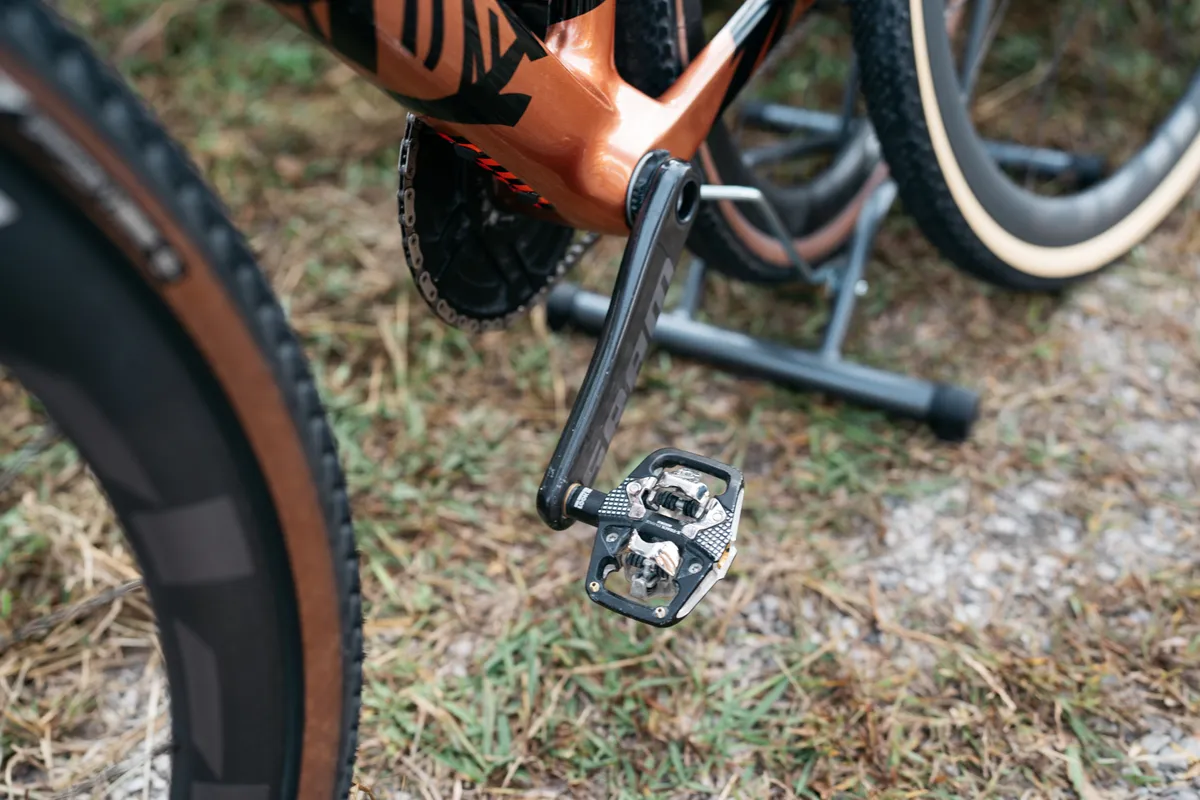
Valverde’s 2-bolt Look mountain bike pedals with cages was a notable exception to the rule.

